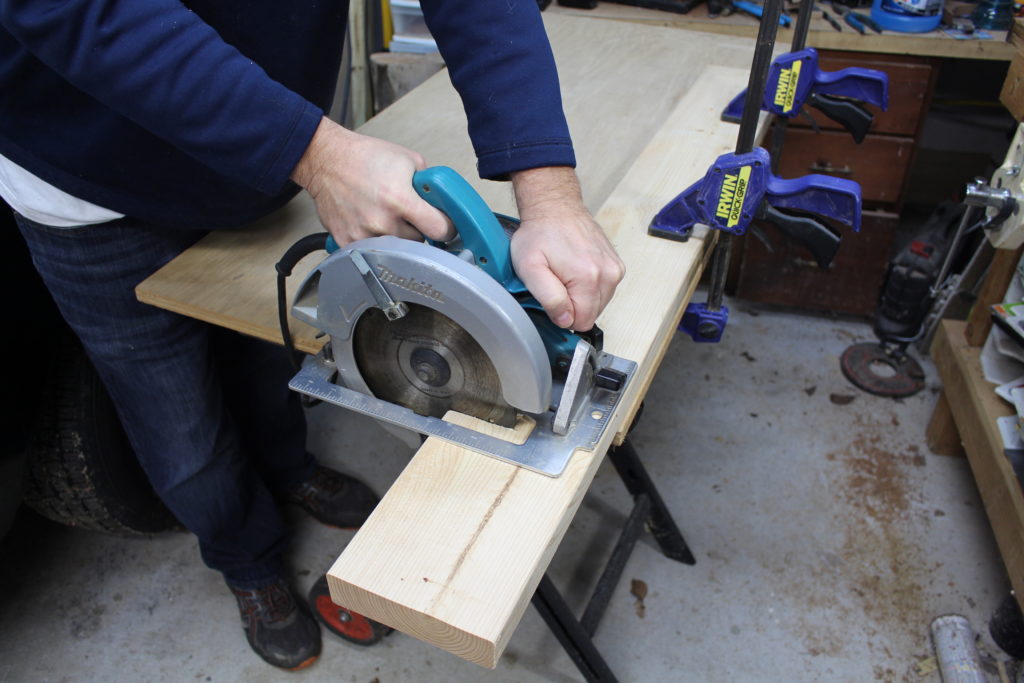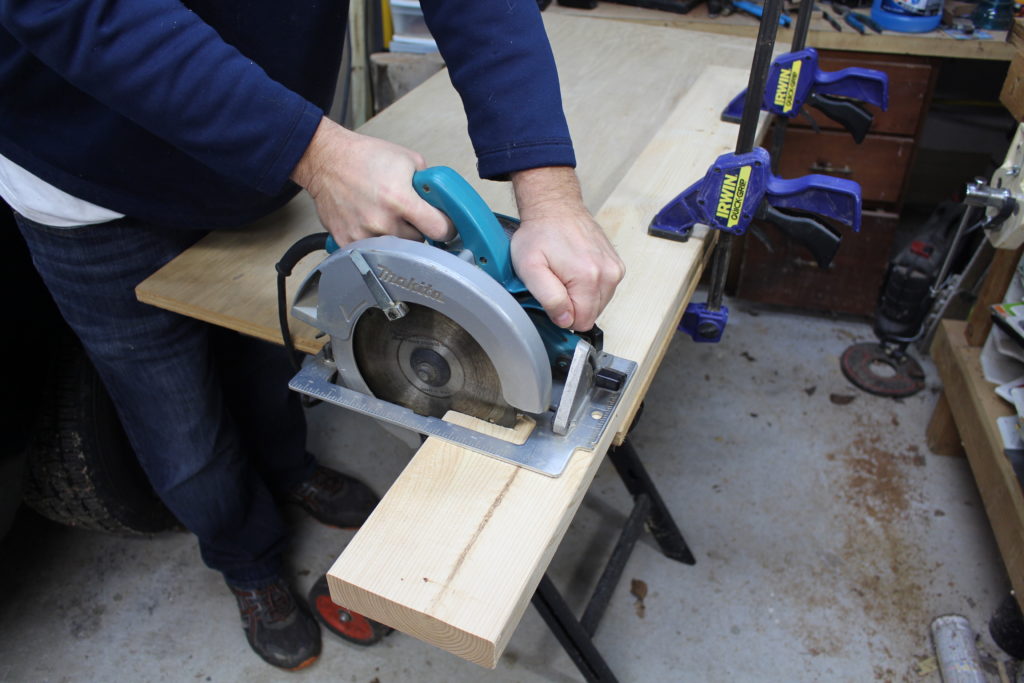Are you wondering why your circular saw keeps kicking back? Well, fret no more! In this handy guide, we’ll dive into the mysteries of circular saw kickback and uncover the reasons behind this common issue. So, let’s roll up our sleeves and get ready to explore.
Now, let’s tackle the first question: what exactly is kickback? Picture this: you’re diligently cutting through a piece of wood, and suddenly, the saw’s blade seems to have a mind of its own, fiercely jerking back at you. Ouch! That’s kickback – when your saw violently reacts due to various factors.
But why does kickback happen? Ah, the million-dollar question! There are several potential culprits, from improper cutting techniques to using dull blades and even a lack of proper safety measures. By understanding these causes, we can take steps to prevent kickback from happening.
Curious to know more about those causes and their solutions? Stick around because we’re about to uncover the secrets behind circular saw kickback and make sure you have a safer and smoother cutting experience. Let’s delve into the world of circular saws and discover how to keep kickback at bay. Ready? Let’s go!
– Ensure the blade is properly aligned and tightened.
– Use a sharp blade.
– Avoid forcing the saw through the material.
– Maintain a controlled cutting speed.
– Use a saw with an electric brake for faster stopping.
Taking these precautions will reduce the risk of kickback and ensure safer operation.

Understanding Why Your Circular Saw Kickbacks: Causes and Solutions
Have you ever experienced the unsettling moment when your circular saw suddenly jerks back in your hands? This dangerous phenomenon, known as kickback, can be alarming and even lead to serious injuries if not properly addressed. In this article, we will delve into the reasons behind why your circular saw kickbacks and provide you with valuable insights and solutions to prevent this from happening. Whether you’re a professional carpenter or a DIY enthusiast, understanding the causes of kickback is crucial for ensuring your safety and getting the best performance out of your circular saw.
The Role of Blade Alignment in Circular Saw Kickback
One common reason for circular saw kickback is improper blade alignment. When the blade is not properly aligned with the cutting line, it can cause the blade to bind or get pinched in the wood, leading to kickback. This can happen when the blade is not square to the guide or when the saw’s base plate is not parallel to the blade. Additionally, using a dull blade or a blade with missing or damaged teeth can also contribute to kickback.
To prevent kickback caused by blade misalignment, it’s essential to ensure that your blade is properly aligned before making any cuts. Start by checking the squareness of your blade to the cutting line using a carpenter’s square or a specialized alignment tool. Adjust the blade or the saw’s base plate as necessary to achieve perfect alignment. Furthermore, regularly inspect and replace worn-out or damaged blades to maintain optimum cutting performance and reduce the risk of kickback.
The Influence of Feeding Speed on Circular Saw Kickback
An often overlooked factor that can contribute to circular saw kickback is the feeding speed. Forcefully pushing the saw through the material at a high speed can cause the blade to bind, resulting in kickback. On the other hand, feeding the saw too slowly can lead to the blade overheating, which can also increase the chances of kickback. Striking the right balance between speed and control is essential for preventing kickback during cutting.
To minimize the risk of kickback due to feeding speed, practice a steady and controlled feeding technique. Allow the saw to do the cutting work while maintaining a firm grip on the handles. Use gentle, even pressure to guide the saw through the material, ensuring a smooth and uninterrupted cutting motion. By maintaining the right feeding speed, you can significantly reduce the likelihood of kickback and achieve cleaner cuts with your circular saw.
The Impact of Material Selection on Circular Saw Kickback
The type and condition of the material being cut can also play a significant role in circular saw kickback. Certain materials, such as knotty or wet wood, are more prone to causing kickback due to their irregularities or reduced structural integrity. Additionally, using a saw with a blade that has a higher tooth count and the appropriate design for the material being cut can help minimize kickback.
When working with challenging materials, take extra precautions to prevent kickback. Assess the condition of the material before making any cuts, and be aware of any knots, warps, or other imperfections that could cause the blade to bind. Consider using a blade specifically designed for the material you are cutting, as it can provide better control and minimize kickback. Always prioritize safety and adjust your cutting technique accordingly when working with difficult materials.
Proper Maintenance and Safety Measures to Prevent Kickback
While understanding the causes of circular saw kickback is essential, implementing proper maintenance and safety measures is equally crucial for preventing this dangerous occurrence. Here, we will explore some valuable tips and precautions to help you minimize the risk of kickback and promote a safe working environment.
Maintenance Tips to Prevent Circular Saw Kickback
1. Keep your saw blades sharp and in good condition. Dull blades are more prone to kickback.
2. Regularly inspect the saw’s base plate for any signs of warping or damage and replace if necessary.
3. Check the alignment of your saw’s blade and base plate before each use to ensure proper cutting performance.
4. Clean your saw regularly, removing any sawdust, debris, or buildup that could interfere with the blade’s movement.
5. Lubricate the blade and moving parts of the saw to reduce friction and ensure smooth operation.
Safety Measures to Prevent Circular Saw Kickback
1. Always wear proper safety equipment, including safety goggles, ear protection, and gloves.
2. Use a riving knife or anti-kickback pawls whenever possible to prevent the wood from pinching the blade.
3. Maintain a firm grip on the saw handles and use both hands to control the tool during cutting.
4. Stand to the side of the blade’s line of action, ensuring that your body is not in the path of kickback.
5. Take the time to properly set up your work environment, ensuring a stable and secure surface for cutting.
In Summary
Circular saw kickback can be a harrowing experience, but with the right knowledge and precautions, it is entirely preventable. By addressing the factors related to blade alignment, feeding speed, and material selection, you can significantly reduce the risk of kickback and ensure a safer and more efficient cutting experience. Remember to practice regular maintenance and prioritize safety measures to keep yourself and those around you safe while working with a circular saw. With careful attention to detail and adherence to proper techniques, you can enjoy the benefits of your circular saw without the fear of kickback.
Key Takeaways: Why Does My Circular Saw Kickback?
- 1. Kickback happens when the saw blade catches the material and forcefully throws it back towards the user.
- 2. Incorrect blade alignment or dull blade can cause kickback.
- 3. Insufficient or incorrect use of the safety features can lead to kickback.
- 4. Overpowering the saw or sudden changes in cutting speed can result in kickback.
- 5. Proper technique, focus, and using a riving knife can help prevent kickback.
Frequently Asked Questions
Welcome to our frequently asked questions section about circular saw kickback. Here, we’ll address common queries to help you understand why your circular saw might experience kickback and how you can prevent it. Read on to find the answers you’re looking for.
1. How does circular saw kickback occur?
Circular saw kickback can happen when the blade binds, causing the saw to jerk back towards you. This sudden movement is usually a result of the blade becoming pinched or trapped in the wood you’re cutting. Kickback can also occur if the blade encounters a knot or a nail hidden in the material.
To prevent kickback, make sure to maintain a firm grip on your saw at all times and use a sharp blade. Additionally, avoid cutting through materials that may have hidden obstructions, and be cautious when cutting near knots or other potential problem areas.
2. Is kickback dangerous?
Yes, kickback can be dangerous and can lead to serious injury if not anticipated or properly handled. When a circular saw kicks back, it forcefully pushes back towards the operator, which can cause you to lose control of the saw and potentially get injured by the spinning blade.
That’s why it’s crucial to always follow safety guidelines when using a circular saw. Use protective equipment such as safety glasses and gloves, and read the user manual for your saw to understand and implement the recommended safety precautions.
3. Can my technique cause circular saw kickback?
Yes, improper technique can contribute to circular saw kickback. One common mistake is applying excessive force or pressure as you’re guiding the saw through the material. Pushing too hard or using a dull blade can increase the chances of kickback occurring.
To minimize the risk of kickback, let the saw do the work and guide it gently through the material without forcing it. Maintain a proper cutting speed and ensure your blade is sharp, well-maintained, and appropriate for the material you’re cutting.
4. How can I prevent circular saw kickback?
Preventing circular saw kickback starts with using the right blade for the job. Choose a blade with the appropriate teeth count and design for the material you’re working with. A blade designed for ripping, for example, may be more prone to kickback when used for cross-cutting.
Other preventive measures include ensuring the saw’s blade is properly aligned and adjusted, using a ripping fence or guide to keep your cuts straight, and providing ample support for the material you’re cutting. Ultimately, maintaining safe cutting techniques and being aware of potential kickback situations can help prevent accidents.
5. Should I use a riving knife to prevent kickback?
Yes, using a riving knife is highly recommended to help prevent circular saw kickback. A riving knife is a safety device that sits behind the blade and helps prevent the material from pinching the blade and causing kickback. It helps keep the cut kerf open and reduces the risk of the blade binding or getting trapped in the wood.
If your circular saw is equipped with a riving knife, make sure to use it whenever possible. The riving knife serves as an extra layer of protection and can significantly reduce the occurrence of kickback during your cutting operations.

How to prevent circular saw from kickback
Summary
So, why does your circular saw kickback? Well, kickback happens when the saw’s blade gets caught in the wood and suddenly jerks back towards you. It can be really dangerous, so it’s important to understand why it happens. One reason is cutting too quickly or with too much force, so take your time. Another reason is a dull blade, so make sure to keep it sharp. And finally, improper positioning of the wood can also cause kickback, so make sure to follow the manufacturer’s instructions. Stay safe!
In summary, kicking back occurs when a circular saw blade gets stuck and forcefully snaps back at you. To avoid this dangerous situation, remember to take your time when cutting, keep your blade sharp, and position the wood correctly. Always prioritize safety and follow the manufacturer’s guidelines. Stay safe while using your circular saw!
